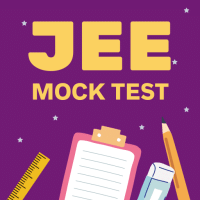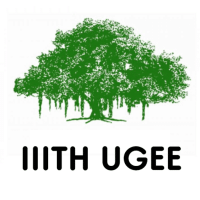JEE Exam > JEE Questions > SECTION I : Single Correct Answer TypeThis se...
Start Learning for Free
SECTION I : Single Correct Answer Type
This section contains 8 multiple choice questions. Each question has four choices (A), (B), (C) and (D) out of
which ONLY ONE is correct.
which ONLY ONE is correct.
Q. Let a1, a2, a3, ….. be in harmonic progression with a1 = 5 and a20 = 25. The least positive integer n for
which an < 0
which an < 0
- a)22
- b)23
- c)24
- d)25
Correct answer is option 'D'. Can you explain this answer?
Verified Answer
SECTION I : Single Correct Answer TypeThis section contains 8 multiple...
Most Upvoted Answer
SECTION I : Single Correct Answer TypeThis section contains 8 multiple...
Understanding Harmonic Progression
Harmonic progression (HP) means that the reciprocals of the terms form an arithmetic progression (AP). Given that a1 = 5 and a20 = 25, we can derive the necessary values.
Finding the Reciprocals
- The terms in HP are:
a1 = 5, a2, a3, ...
The reciprocals are:
1/a1 = 1/5, 1/a2, 1/a3, ..., 1/a20 = 1/25
- Since these reciprocals are in AP, we can denote:
d = common difference of the AP.
Setting Up the Equations
1. The first term of the AP is 1/5.
2. The 20th term can be expressed as:
1/a20 = 1/5 + 19d = 1/25
- From this, we can solve for d:
1/5 + 19d = 1/25
19d = 1/25 - 1/5
19d = 1/25 - 5/25
19d = -4/25
d = -4/(25*19) = -4/475
Finding the General Term
- The n-th term of the reciprocals in AP is given by:
1/an = 1/5 + (n-1)(-4/475)
= 1/5 - 4(n-1)/475
- Therefore, the n-th term can be expressed as:
an = 1 / (1/5 - 4(n-1)/475)
Finding When an < />
- Setting an < 0:="" />
1/5 - 4(n-1)/475 < 0="" />
-4(n-1)/475 < -1/5="" />
4(n-1)/475 > 1/5
n - 1 > (475/4) * (1/5)
n - 1 > 23.75
n > 24.75
- Therefore, the least positive integer n is 25.
Thus, the answer is option D: 25.
Harmonic progression (HP) means that the reciprocals of the terms form an arithmetic progression (AP). Given that a1 = 5 and a20 = 25, we can derive the necessary values.
Finding the Reciprocals
- The terms in HP are:
a1 = 5, a2, a3, ...
The reciprocals are:
1/a1 = 1/5, 1/a2, 1/a3, ..., 1/a20 = 1/25
- Since these reciprocals are in AP, we can denote:
d = common difference of the AP.
Setting Up the Equations
1. The first term of the AP is 1/5.
2. The 20th term can be expressed as:
1/a20 = 1/5 + 19d = 1/25
- From this, we can solve for d:
1/5 + 19d = 1/25
19d = 1/25 - 1/5
19d = 1/25 - 5/25
19d = -4/25
d = -4/(25*19) = -4/475
Finding the General Term
- The n-th term of the reciprocals in AP is given by:
1/an = 1/5 + (n-1)(-4/475)
= 1/5 - 4(n-1)/475
- Therefore, the n-th term can be expressed as:
an = 1 / (1/5 - 4(n-1)/475)
Finding When an < />
- Setting an < 0:="" />
1/5 - 4(n-1)/475 < 0="" />
-4(n-1)/475 < -1/5="" />
4(n-1)/475 > 1/5
n - 1 > (475/4) * (1/5)
n - 1 > 23.75
n > 24.75
- Therefore, the least positive integer n is 25.
Thus, the answer is option D: 25.

|
Explore Courses for JEE exam
|

|
Question Description
SECTION I : Single Correct Answer TypeThis section contains 8 multiple choice questions. Each question has four choices (A), (B), (C) and (D) out ofwhich ONLY ONE is correct.Q. Let a1, a2, a3, ….. be in harmonic progression with a1 = 5 and a20 = 25. The least positive integer n forwhich an < 0a)22b)23c)24d)25Correct answer is option 'D'. Can you explain this answer? for JEE 2025 is part of JEE preparation. The Question and answers have been prepared according to the JEE exam syllabus. Information about SECTION I : Single Correct Answer TypeThis section contains 8 multiple choice questions. Each question has four choices (A), (B), (C) and (D) out ofwhich ONLY ONE is correct.Q. Let a1, a2, a3, ….. be in harmonic progression with a1 = 5 and a20 = 25. The least positive integer n forwhich an < 0a)22b)23c)24d)25Correct answer is option 'D'. Can you explain this answer? covers all topics & solutions for JEE 2025 Exam. Find important definitions, questions, meanings, examples, exercises and tests below for SECTION I : Single Correct Answer TypeThis section contains 8 multiple choice questions. Each question has four choices (A), (B), (C) and (D) out ofwhich ONLY ONE is correct.Q. Let a1, a2, a3, ….. be in harmonic progression with a1 = 5 and a20 = 25. The least positive integer n forwhich an < 0a)22b)23c)24d)25Correct answer is option 'D'. Can you explain this answer?.
SECTION I : Single Correct Answer TypeThis section contains 8 multiple choice questions. Each question has four choices (A), (B), (C) and (D) out ofwhich ONLY ONE is correct.Q. Let a1, a2, a3, ….. be in harmonic progression with a1 = 5 and a20 = 25. The least positive integer n forwhich an < 0a)22b)23c)24d)25Correct answer is option 'D'. Can you explain this answer? for JEE 2025 is part of JEE preparation. The Question and answers have been prepared according to the JEE exam syllabus. Information about SECTION I : Single Correct Answer TypeThis section contains 8 multiple choice questions. Each question has four choices (A), (B), (C) and (D) out ofwhich ONLY ONE is correct.Q. Let a1, a2, a3, ….. be in harmonic progression with a1 = 5 and a20 = 25. The least positive integer n forwhich an < 0a)22b)23c)24d)25Correct answer is option 'D'. Can you explain this answer? covers all topics & solutions for JEE 2025 Exam. Find important definitions, questions, meanings, examples, exercises and tests below for SECTION I : Single Correct Answer TypeThis section contains 8 multiple choice questions. Each question has four choices (A), (B), (C) and (D) out ofwhich ONLY ONE is correct.Q. Let a1, a2, a3, ….. be in harmonic progression with a1 = 5 and a20 = 25. The least positive integer n forwhich an < 0a)22b)23c)24d)25Correct answer is option 'D'. Can you explain this answer?.
Solutions for SECTION I : Single Correct Answer TypeThis section contains 8 multiple choice questions. Each question has four choices (A), (B), (C) and (D) out ofwhich ONLY ONE is correct.Q. Let a1, a2, a3, ….. be in harmonic progression with a1 = 5 and a20 = 25. The least positive integer n forwhich an < 0a)22b)23c)24d)25Correct answer is option 'D'. Can you explain this answer? in English & in Hindi are available as part of our courses for JEE.
Download more important topics, notes, lectures and mock test series for JEE Exam by signing up for free.
Here you can find the meaning of SECTION I : Single Correct Answer TypeThis section contains 8 multiple choice questions. Each question has four choices (A), (B), (C) and (D) out ofwhich ONLY ONE is correct.Q. Let a1, a2, a3, ….. be in harmonic progression with a1 = 5 and a20 = 25. The least positive integer n forwhich an < 0a)22b)23c)24d)25Correct answer is option 'D'. Can you explain this answer? defined & explained in the simplest way possible. Besides giving the explanation of
SECTION I : Single Correct Answer TypeThis section contains 8 multiple choice questions. Each question has four choices (A), (B), (C) and (D) out ofwhich ONLY ONE is correct.Q. Let a1, a2, a3, ….. be in harmonic progression with a1 = 5 and a20 = 25. The least positive integer n forwhich an < 0a)22b)23c)24d)25Correct answer is option 'D'. Can you explain this answer?, a detailed solution for SECTION I : Single Correct Answer TypeThis section contains 8 multiple choice questions. Each question has four choices (A), (B), (C) and (D) out ofwhich ONLY ONE is correct.Q. Let a1, a2, a3, ….. be in harmonic progression with a1 = 5 and a20 = 25. The least positive integer n forwhich an < 0a)22b)23c)24d)25Correct answer is option 'D'. Can you explain this answer? has been provided alongside types of SECTION I : Single Correct Answer TypeThis section contains 8 multiple choice questions. Each question has four choices (A), (B), (C) and (D) out ofwhich ONLY ONE is correct.Q. Let a1, a2, a3, ….. be in harmonic progression with a1 = 5 and a20 = 25. The least positive integer n forwhich an < 0a)22b)23c)24d)25Correct answer is option 'D'. Can you explain this answer? theory, EduRev gives you an
ample number of questions to practice SECTION I : Single Correct Answer TypeThis section contains 8 multiple choice questions. Each question has four choices (A), (B), (C) and (D) out ofwhich ONLY ONE is correct.Q. Let a1, a2, a3, ….. be in harmonic progression with a1 = 5 and a20 = 25. The least positive integer n forwhich an < 0a)22b)23c)24d)25Correct answer is option 'D'. Can you explain this answer? tests, examples and also practice JEE tests.

|
Explore Courses for JEE exam
|

|
Signup to solve all Doubts
Signup to see your scores go up within 7 days! Learn & Practice with 1000+ FREE Notes, Videos & Tests.



















